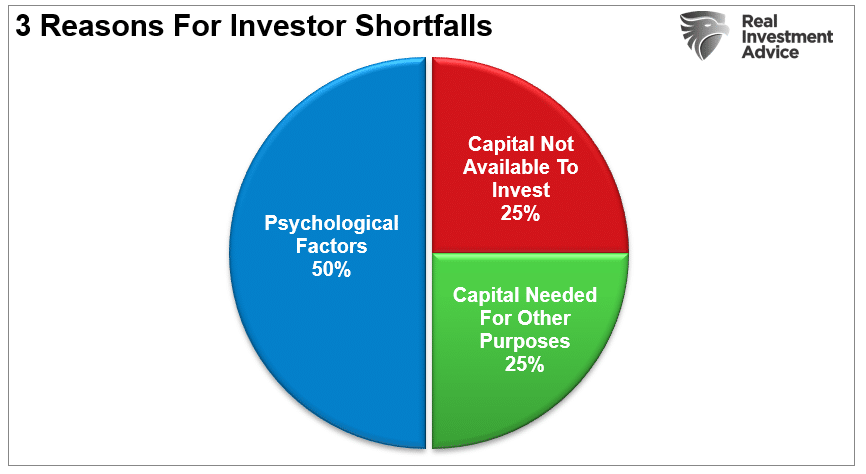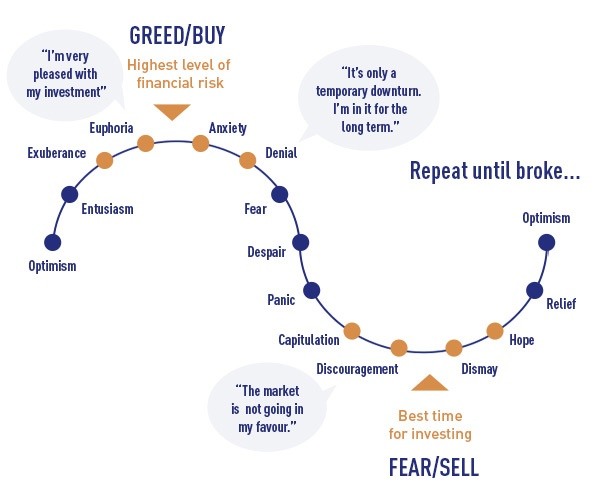Here are my New Year “investor” resolutions for 2022. Like all resolutions made at the beginning of a new year, they can be hard to adhere to.
Early in my career, I built health and fitness facilities. But have you ever wondered why you couldn’t just go into a gym and pay a fee to use it? It’s because the entire fitness industry gets built around a simple premise – you will sign up for a membership and never use it. So, every month, the membership fee continues to hit your credit card. Yet, you don’t cancel the membership because you feel guilty about not starting your diet and workout program.
But you promise yourself you will start tomorrow.
Fitness facilities can continually oversell their gym capacity because of the many members that sign up but never show up. Just like going to the gym, resolutions to eat better, sleep more, work out, etc., all sound great. However, while we know we should do them, we simply don’t.
Such is why America is the most obese country on the planet.
Why am I telling you this? Because investor resolutions are just as hard to follow.
We know we should, but there are many psychological reasons we don’t.
Why We Continue To Repeat Our Mistakes
Every year, Dalbar Research publishes an extensive study that repeatedly shows three primary reasons for investor failure over time.

The key issues are a lack of capital to invest and psychology. Dalbar defined nine of the irrational investment behavioral biases specifically:
- Loss Aversion – The fear of loss leads to a withdrawal of capital at the worst possible time. Also known as “panic selling.”
- Narrow Framing – Making decisions about on part of the portfolio without considering the effects on the total.
- Anchoring – The process of remaining focused on what happened previously and not adapting to a changing market.
- Mental Accounting – Separating performance of investments mentally to justify success and failure.
- Lack of Diversification – Believing a portfolio is diversified when in fact it is a highly correlated pool of assets.
- Herding– Following what everyone else is doing. Leads to “buy high/sell low.”
- Regret – Not performing a necessary action due to the regret of a previous failure.
- Media Response – The media has a bias to optimism to sell products from advertisers and attract view/readership.
- Optimism – Overly optimistic assumptions tend to lead to rather dramatic reversions when met with reality.
The “herding effect” and “loss aversion” are the most significant behaviors that compound the issues of investor mistakes over time. As markets rise, individuals believe the current price trend will continue indefinitely. The longer the rising trend lasts, the more ingrained the belief becomes. Eventually, the last of “holdouts” finally “buy-in” as the market evolves into a “euphoric state.”
As markets decline, there is a slow realization “this decline” is not a “buy the dip” opportunity. As losses mount, the need to “avert loss” begins to mount until individuals seek to “avert further loss” by selling.
This behavioral trend runs counter-intuitive to the “buy low/sell high” investment rule.
Investor Resolutions For 2022
So, with the understanding that our emotions tend to get the better of us, I have put together a set of resolutions to help me be a better investor and portfolio manager.
In 2022, I will (or attempt to):
- Do more of what is working and less of what isn’t.
- Remember that the “Trend Is My Friend.”
- Be either bullish or bearish, but not “hoggish.” (Hogs get slaughtered)
- Remember it is “Okay” to pay taxes.
- Maximize profits by staging my buys, working my orders, and getting the best price.
- Look to buy damaged opportunities, not damaged investments.
- Diversify to control my risk.
- Control my risk by always having pre-determined sell levels and stop-losses.
- Do my homework. I will do my homework. I will do my homework.
- Not allow panic to influence my buy/sell decisions.
- Remember that “cash” is for winners.
- Expect, but not fear, corrections.
- Expect to be wrong, and I will correct errors quickly.
- Check “hope” at the door.
- Be flexible.
- Have the patience to allow my discipline and strategy to work.
- Turn off the television, put down the newspaper, and focus on my analysis.
These are the same resolutions I attempt to follow every year.
In investing, just as in life, I won’t get into shape because I bought a gym membership. I won’t lose weight because I subscribed to a “diet app” on my phone. I have to go to the gym and stick to my diet.
There is no shortcut to being a successful investor. There are only the basic rules, discipline, and focus required to succeed long-term.
If I want to be a better investor, I have to follow my resolutions.
A Year Of Challenges
As I discussed on Tuesday, every analyst is optimistic about the new year. Expectations are high for explosive economic growth, more stimulus, debt-driven infrastructure spending, and 5000-5500 on the S&P by year-end.
Maybe that will be the case. However, as valuations have become more extreme, the consistently bullish media continue to invent rationals for higher stock prices.
- Low interest rates justify high valuations.
- There is no alternative (T.I.N.A.)
- Monetary policy supports higher prices.
- Low inflation supports higher prices
Notably, those rationalizations appeared correct due to the massive flood of monetary and fiscal policy during that period.
However, things are now changing with a Federal Reserve set to remove those accommodative policies. As a result, any shortfall in earnings growth, economic recovery, or a rise in interest rates could immediately and negatively impact investors.
The biggest problem for investors is the bull market itself.
When the “bull is running,” we believe we are smarter and better than we are. As a result, we take on substantially more risk than we realize as we continue to chase market returns and allow “greed” to displace our rational logic. Like gambling, success breeds overconfidence as the rising tide disguises our investment mistakes.
Unfortunately, during the subsequent completion of the full-market cycle, our errors return to haunt us. Always too painfully and tragically as the loss of capital exceeds our capability to “hold on for the long-term.”
Conclusion
While most financial media and blogosphere suggest that investors should only “buy and hold” for the long-term, the reality of capital destruction during significant market declines is a far more pernicious issue.
With market valuations elevated, leverage high, economic weakness pervasive, and profit margins coming under pressure, investors should consider their set of investor resolutions for 2022. The weight of evidence suggests that despite ongoing “bullish calls” for the markets in the year ahead, there is a risk of disappointment
Of course, the biggest mistake we all make is “waiting to start our resolutions” in the first place.
Related: Market Outlook For 2022: Risks To The Bullish Thesis



